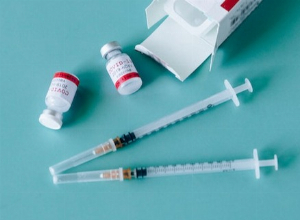Thrombotic thrombocytopenic purpura (TTP) : how is it treated?
Published 29 Sep 2022 • By Hela Ammar
Red or purple patches on the skin, bleeding, headaches, flu, etc. Purpura represents a multitude of mini-bleedings under the skin due to the passage of red blood cells into the dermis, and can be linked to a low platelet count. Although it is benign in most cases, it may sometimes indicate the presence of a more serious condition, such as thrombotic thrombocytopenic purpura (TTP), and may hide more serious symptoms, such as internal bleeding or vascular obstruction.
TTP is a blood disorder related to very low platelet count, which constitutes a life-threatening emergency. When this conditions is suspected, treatment must be initiated immediately to ensure the patient's safety.
What are the possible treatments for this disorder? How exactly do they work?
We explain it all in our article!

Thrombotic thrombocytopenic purpura (TTP) is a bleeding disorders characterised by abnormally low platelet counts.
TTP is a serious disease leading to the formation of small clots that can obstruct the blood vessels, impairing oxygenation of the body's vital organs. TTP is characterised by purpura, anaemia and possible renal failure. There are two forms of TTP: the acquired form, which is acquired during life as a result of an infection, an autoimmune disease or immunosuppression, for example, and the inherited form, which is due to the transmission of a genetic defect in the ADAMTS13 protein. In both cases, the symptoms are the same but the circumstances and age of onset vary.
In the face of the symptoms, when TTP is suspected, treatment is started immediately to ensure the patient's safety.
What are the possible treatments?
With TTP, the first goal of any treatment is to raise the platelet count to a normal level (150,000 and 300,000/mm3). Platelets are vital components of the blood and very low levels can be fatal. Secondly, the treatment aims to improve the symptoms of the disease.
What medications are recommended for treating thrombotic thrombocytopenic purpura (TTP)?
For TTP, the first-line treatment is: plasma infusions for hereditary TTP, and plasmapheresis (plasma exchange) for acquired TTP. The latter is used to remove antibodies that inhibit the ADAMTS13 enzyme responsible for regulating platelet aggregation and reintroduce plasma containing a functional enzyme. In many cases, plasmapheresis, or plasma exchange, is used to remove antibodies that inhibit the ADAMTS13 protease and to reintroduce a functional ADAMTS13 protein. There is also a routine prescription of corticosteroids for these patients in order to increase platelet levels and inhibit antibody formation. Rituximab is also prescribed for acquired TTP to inhibit the production of antibodies to the ADAMTS13 protease. Caplacizumab, recently approved for the treatment of TTP, acts by inhibiting platelet aggregation. More rarely, splenectomy can also considered an option for treating acquired TTP. Other symptomatic and supportive treatments may be considered as well.
With current standard treatments and rapid diagnosis, prognosis for patients is excellent. However, in many cases, patients may experience relapses and complications, especially in the case of TTP. They may also experience neurological disorders affecting their quality of life. Work is currently underway at international level to better understand the mechanisms and causes for resistance to the various treatments currently available, in order to develop new molecules and therapies.
Give it a "like" and share your thoughts and questions with the community in the comments below!
Take care!

 Facebook
Facebook Twitter
Twitter


